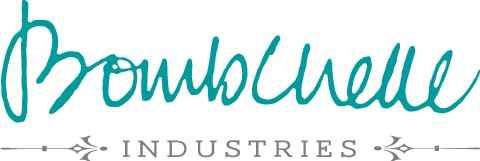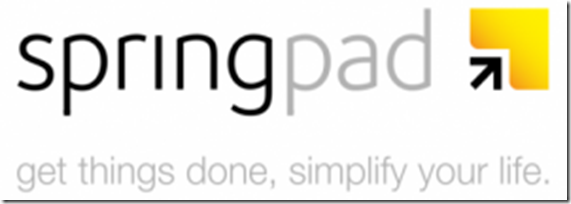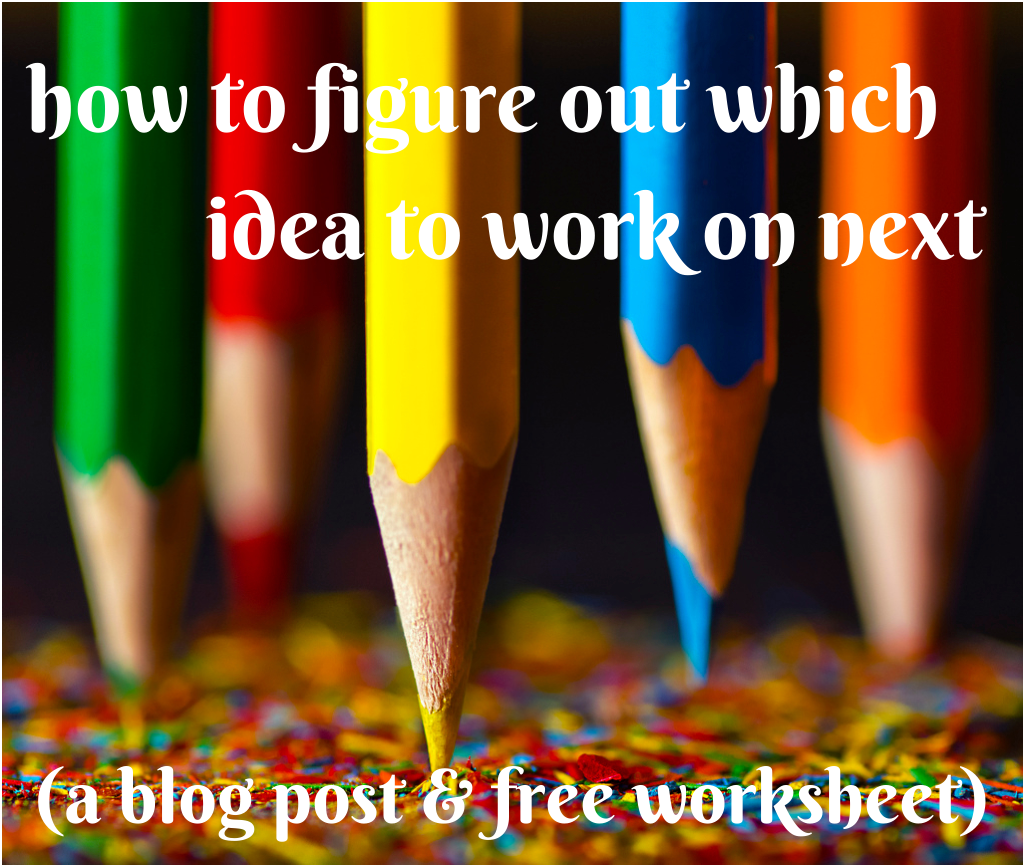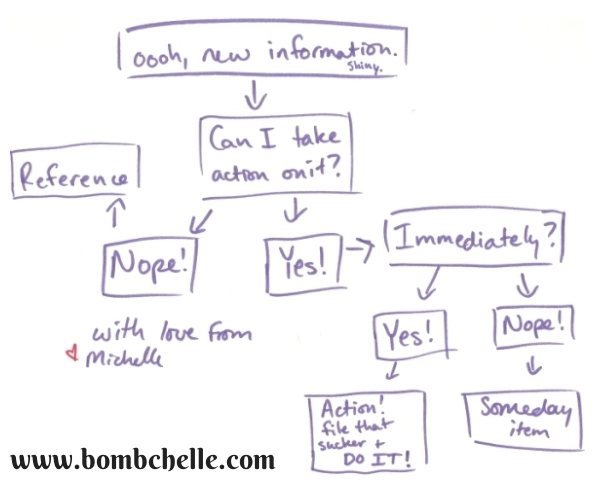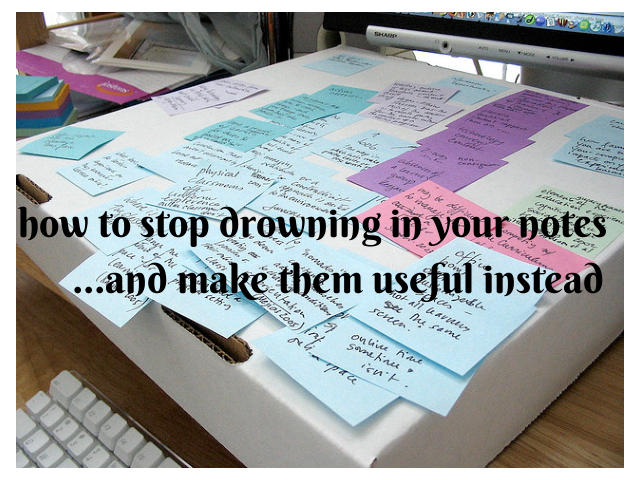One of my pet peeves is something I see all too regularly: people using stereotypes as a shield. Specifically, stereotypes about themselves. Specifically, this whole “I’m an ARTEEST, I don’t need no stinkin’ structure” thing.
Here’s the deal: there is some small amount of people who actually do thrive in complete and utter chaos. A very, very small amount of people. Everyone else who uses the “I’m an artist/creative/right-brainer, I can’t do it” excuse is shooting themselves in the foot. (Ow.)
It’s a false divide.
This whole issue of creativity being at odds with other things seems to be a fairly recent development. One that is probably based in that ol’ “right brain vs. left brain” chestnut. Which is kind of ridiculous, given that people (people like cognitive scientists) have been saying for some 25 years that dividing broad activities (such as creativity) up according to brain hemisphere is – well, silly. And, you know, not backed up by the science.
(And I quote, “What we call “creativity” is so diverse that it can’t be localized in the brain very well.” In other words? Creativity: a whole brain activity.)
It can be useful as a shorthand, a tool, but, like many tools, somehow the relationship has got turned around so that the tool is the master and we’re working for it, instead of the other way around. Not very helpful now, is it?
Da Vinci was a painter and a sculptor, a mathematician and an engineer. Nobody told him these things contradicted each other. Ben Franklin played three instruments and composed music in addition to being a crazy-smart scientist. I’m sure there are more examples, but that will suffice for now. (We could probably add JK Rowling to the list – author & amazing business woman.)
It kills your creativity.
When you don’t have any idea where your art supplies are at, or where you left that first draft, or you forgot that awesome new thing you wanted to work on, or you don’t keep track of your ideas so they die on the vine, never coming to fruition…it is not beneficial to your creativity. One would argue that it is, in fact, the other way around.
It kills your business.
And, of course, if you can’t keep track of your art supplies or your first draft or your ideas, chances are you’re having a hard time keeping track of other things, too. Like your clients, and where their projects are at, and what round of revisions you’re on, and how much time you’re actually spending on work, and what your profit margin is. Which translates into:
- less customers
- less time
- less money
- lots of frustration & overwhelm
Yuck.
You weren’t taught how.
And here’s the reason that, although this myth-shield-excuse really bothers me, I don’t blame you for ending up believing it. The simple fact is, you weren’t taught how to be any other way. People assume that creative folks are a lost cause when it comes to these things, that they really do work best in chaos, that that’s just the way they are. Most schools are woefully inadequate in many areas, and this is one of them – they still encourage this false divide.
Then, by the time you do start hearing about things like “systems” or “organization” or “productivity”, they’re packaged as one-size-fits-all solutions – the assumption being, if it doesn’t fit you, something is wrong with you, not it. They don’t work for you, and you don’t know what does. And it’s easier to just work in the current, somewhat restrictive chaos rather than cut off a part of yourself trying to fit into a too-small box.
You are a rose.
Yes? Hopefully we can agree on that – you are totally amazing & wonderful & beautiful. I believe it wholeheartedly.
Picture a rose bush. This rose bush in particular, it’s not looking bad, per se, but it’s kinda…all over the place. It looks like it’s not really sure where to go. Got it?
Now: give that rose bush a trellis to twine around. Shazam! How’s the rose bush looking now? Much better, yes? Growing tall, reaching towards the sun, dazzling bystanders with its beauty.
Structure will not kill creativity, any more than a trellis will kill a rose bush. It’s an incredibly useful tool that can put you back in control and in power. And it doesn’t have to feel confining or stuffy or boring – it can feel supportive, and bring an ease to things. This might seem totally baffling, but trust me when I say that it can. The results? So, so gorgeous.
What trellises have you built for yourself in your life and work? Where do they need shored up a bit?
Oh, and if you loved this article, please tweet it, like it, share it! I want to get the word out to as many people as possible. Let’s build some trellises!
